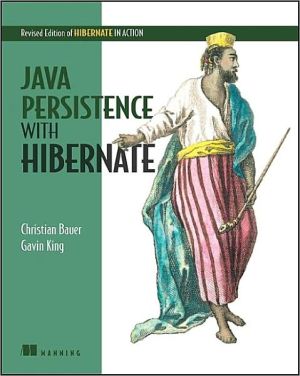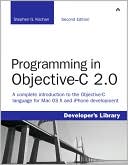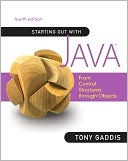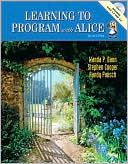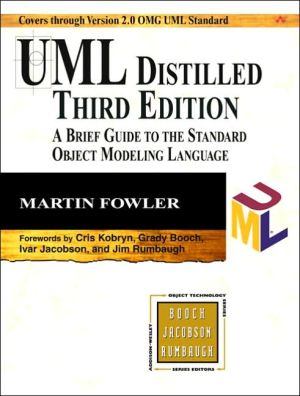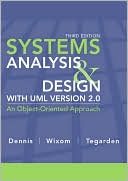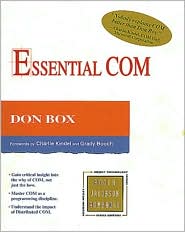Java Persistence with Hibernate
Persistence-the ability of data to outlive an instance of a program-is central to modern applications. Hibernate, the most popular Java persistence tool, provides automatic and transparent object/relational mapping making it a snap to work with SQL databases in Java applications. Hibernate applications are cheaper, more portable, and more resilient to change. Because it conforms to the new EJB 3.0 and Java Persistence 1.0 standard, Hibernate allows the developer to seamlessly create...
Search in google:
The new bible of Hibernate—a major revision of the popular "Hibernate in Action"—builds on the same single example application to introduce and explain the latest Hibernate 3.2 in detail.
foreword to t he revised edition xix foreword to the first edition xxi preface to the revised edition xxiii preface to the first edition xxv acknowledgments xxviii about this book xxix about the cover illustration xxxiii Part 1 Getting started with Hibernate and EJB 3.0 1 Chapter 1 Understanding object/relational persistence 3 What is persistence? 5 The paradigm mismatch 10 Persistence layers and alternatives 20 Object/relational mapping 24 Summary 35 Chapter 2 Starting a project 37 Starting a Hibernate project 38 Starting a Java Persistence project 68 Reverse engineering a legacy database 88 Integration with Java EE services 96 Summary 104 Chapter 3 Domain models and metadata 105 The CaveatEmptor application 106 Implementing the domain model 110 Object/relational mapping metadata 123 Alternative entity representation 140 Summary 152 Part 2 Mapping concepts and strategies 155 Chapter 4 Mapping persistent classes 157 Understanding entities and value types 158 Mapping entities with identity 161 Class mapping options 171 Fine-grained models and mappings 177 Summary 189 Chapter 5 Inheritance and custom types 191 Mapping class inheritance 192 The Hibernate type system 212 Creating custom mapping types 220 Summary 239 Chapter 6 Mapping collections and entity associations 240 Sets, bags, lists, and maps of value types 241 Collections of components 251 Mapping collections with annotations 256 Mapping a parent/children relationship 260 Summary 275 Chapter 7 Advanced entity association mappings 277 Single-valued entity associations 278 Many-valued entity associations 290 Polymorphic associations 313 Summary 321 Chapter 8 Legacy databases and custom SQL 322 Integrating legacy databases 323 Customizing SQL 350 Improving schema DDL 364 Summary 378 Part 3 Conversational object processing 381 Chapter 9 Working with objects 383 The persistence lifecycle 384 Object identity and equality 391 The Hibernate interfaces 401 The Java Persistence API 417 Using Java Persistence in EJB components 426 Summary 431 Chapter 10 Transactions and concurrency 433 Transaction essentials 434 Controlling concurrent access 453 Nontransactional data access 469 Summary 474 Chapter 11 Implementing conversations 476 Propagating the Hibernate Session 477 Conversations with Hibernate 485 Conversations with JPA 497 Conversations with EJB 3.0 506 Summary 515 Chapter 12 Modifying objects efficiently 517 Transitive persistence 518 Bulk and batch operations 532 Data filtering and interception 540 Summary 558 Chaoter 13 Optimizing fetching and caching 559 Defining the global fetch plan 560 Selecting a fetch strategy 573 Caching fundamentals 592 Caching in practice 602 Summary 612 Chapter 14 Querying with HQL and JPA QL 614 Creating and running queries 615 Basic HQL and JPA QL queries 633 Joins, reporting queries, and subselects 643 Summary 662 Chapter 15 Advanced query options 663 Querying with criteria and example 664 Using native SQL queries 683 Filtering collections 688 Caching query results 691 Summary 695 Chapter 16 Creating and testing layered applications 697 Hibernate in a web application 698 Creating a persistence layer 708 Introducing the Command pattern 718 Designing applications with EJB 3.0 725 Testing 730 Summary 746 Chapter 17 Introducing JBoss Seam 747 The Java EE 5.0 programming model 748 Improving the application with Seam 765 Understanding contextual components 779 Validating user input 789 Simplifying persistence with Seam 803 Summary 816 appendix A SQL fundamentals 818 appendix B Mapping quick reference 822 references 824 index 825
\ From Barnes & NobleThe Barnes & Noble Review\ For years, Java developers struggled with object persistence. Then came breakthrough frameworks like Hibernate -- and outstanding books like Hibernate In Action. Hibernate's "object/relational mapping" approach proved so useful that it has powerfully influenced Sun's EJB 3.0. When the authors of Hibernate In Action returned to update their book, they wanted to cover the entire topic of Java persistence. Hence the field's definitive guidebook is now called Java Persistence with Hibernate. \ This book is extremely ambitious, and equally successful. First, it's a tutorial that gives you a jump-start using Hibernate 3.2, the Java Persistence API, and EJB 3.0. Next, it's a comprehensive guide to all facets of Hibernate 3.2, basic to advanced: object processing, querying, optimization, application design, and more. Third, it's a comprehensive reference to both Hibernate and Java Persistence: one you'll rely on no matter how experienced you get.\ Christian Bauer and Gavin King start by explaining why the "object/relational mismatch" between Java and databases is so troublesome; how mapping solves the problem; and what you need to know about domain models and metadata. Next, you'll drill down to real-world mapping of Java classes and properties to SQL tables and columns, exploring everything Hibernate 3.2 and Java Persistence can do. Bauer and King cover inheritance, collections, integrating legacy database schemas, and (carefully) using advanced techniques such as polymorphic entity associations.\ In Part III, they turn to "conversational" object processing: loading and storing data; writing transactional and "conversation-aware" applications; designing and implementing layered Java applications, and more. This section's best practices will be especially helpful. And if you want to go even further, you'll appreciate the authors' introduction to the JBoss Seam framework, the next step towards simplifying Java-based web development. Bill Camarda, from the February 2007 Read Only\ \ \
